The Art of Science—Versailles at the Science Museum, London
Have you ever wondered how it would feel to witness the grandeur and opulence of the 18th-century French court? Then you might want to go to London.
Edoardo Cesarino 19 December 2024
Women and people of color are severely underrepresented as artists in the Western art tradition. Praised masterpieces hang on the walls of major museums such as the Musée du Louvre, the State Hermitage Museum, and the Metropolitan Museum of Art; however, the majority of these works are by white male artists. Gio Swaby is helping overturn this biased tradition with her first solo museum exhibition, Gio Swaby: Fresh Up, which will travel through 2023 in the United States. Currently, the show is to be seen at the Museum of Fine Arts in Saint Petersburg, Florida.
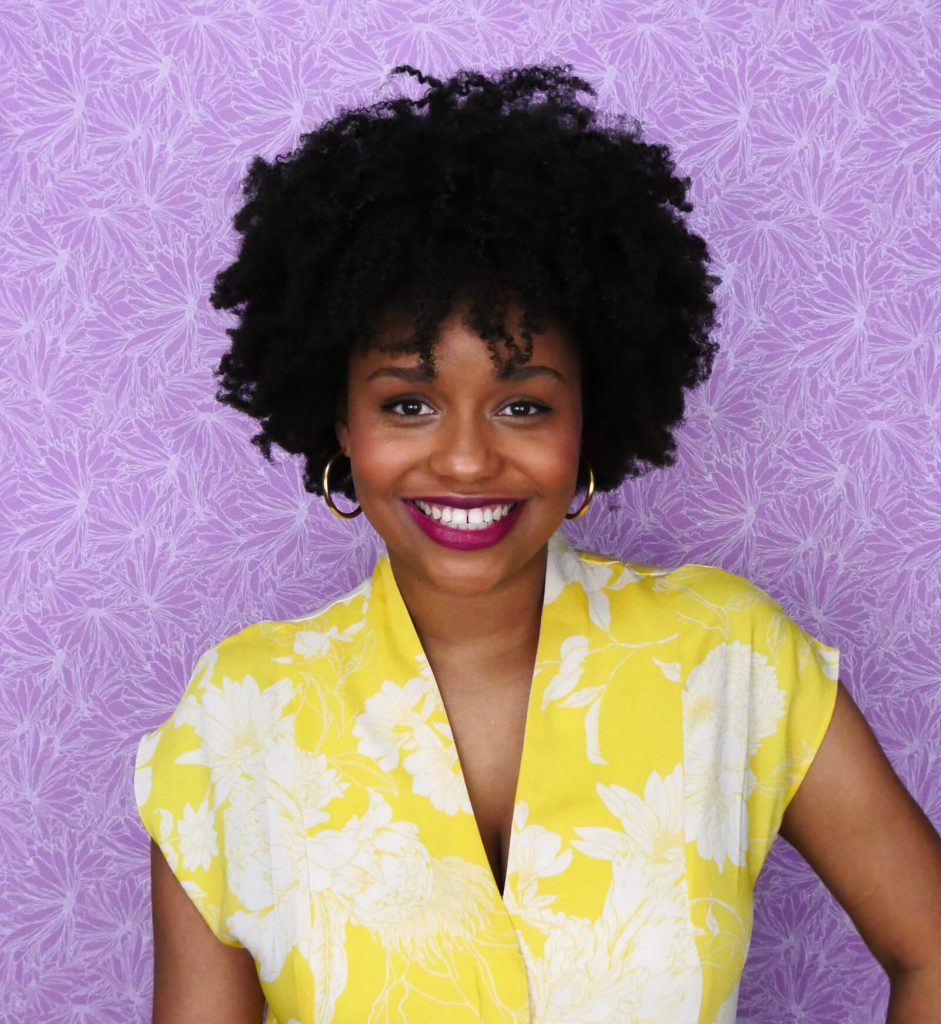
Gio Swaby, 2020, digital photograph, Claire Oliver Gallery, New York City, NY, USA.
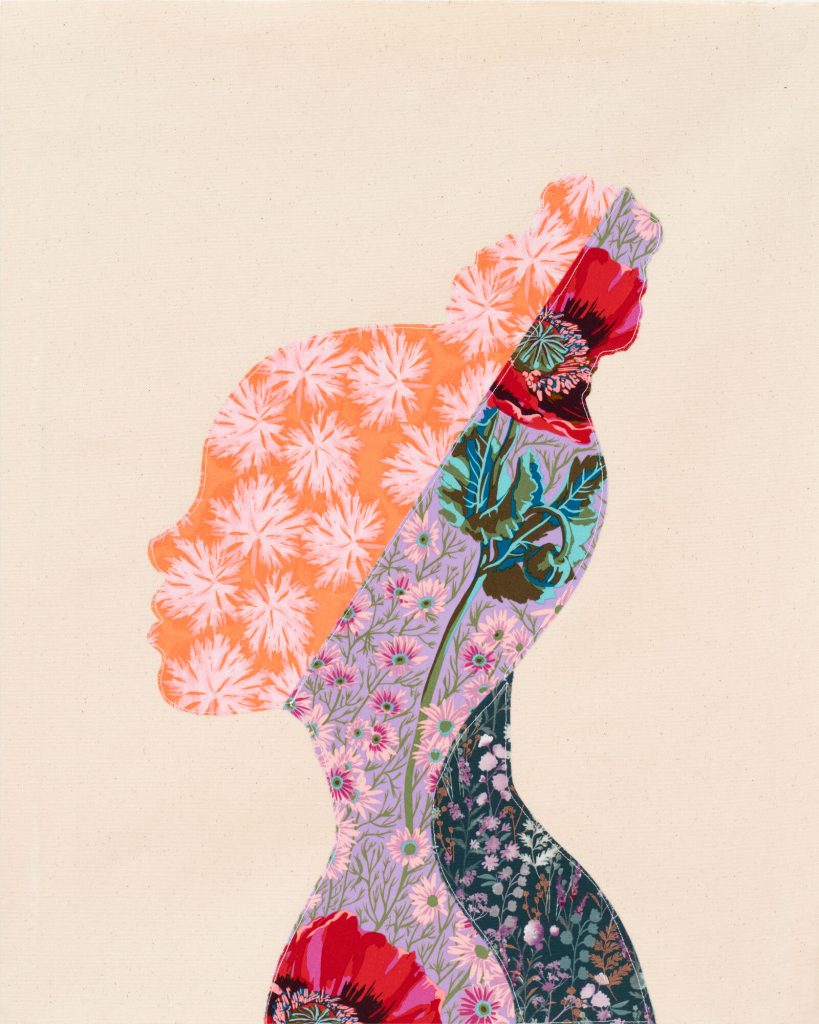
Gio Swaby, New Growth Second Chapter 11, 2021, thread and fabric sewn on canvas, collection of The Altman Family. Courtesy of Claire Oliver Gallery.
Gio Swaby is a Black woman, and she portrays Black women as the subjects of her textile artwork. The subjects are all close friends and family members of the artist, therefore there is a sense of love and affection intrinsic to every piece. Swaby explores many emotions, feelings, and experiences common to Black women that are uncommon or unknown to many of her viewers.
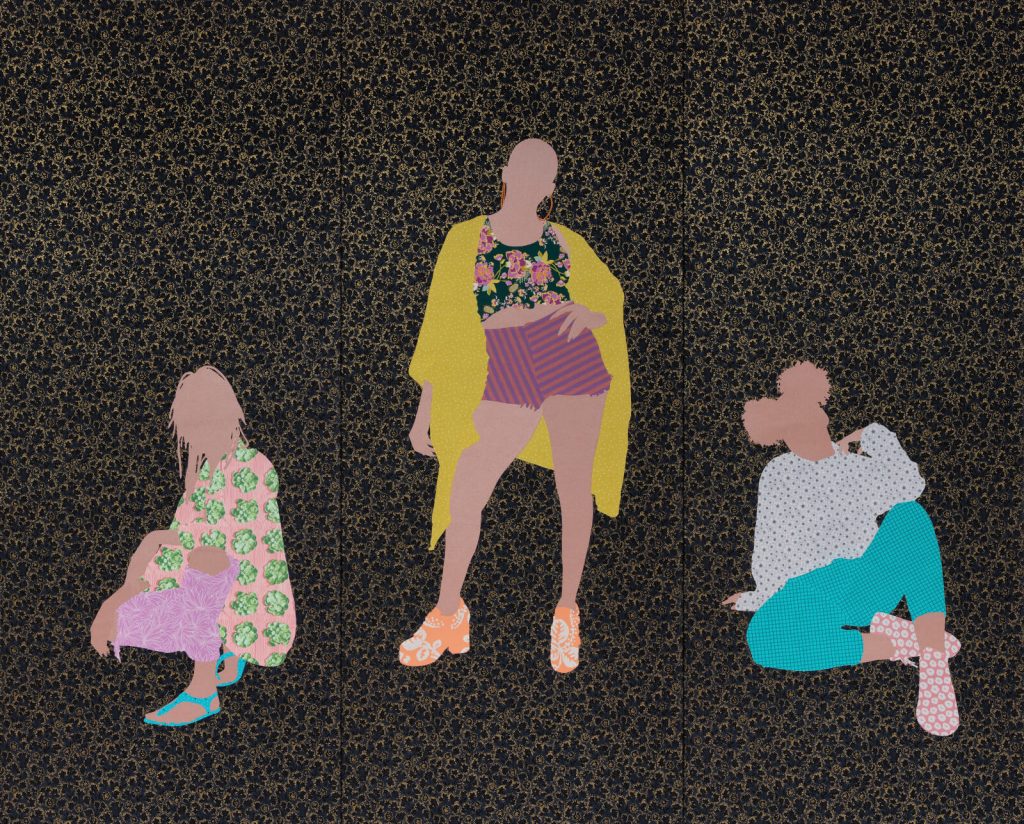
Gio Swaby, Gyalavantin’, 2021, thread and fabric sewn on canvas, Claire Oliver Gallery, New York City, NY, USA.
As a white male viewer, it was very shocking to discover that strangers have approached Gio Swaby asking to touch her hair. Swaby describes this experience as a micro-aggression because she and other Black women should not sacrifice their comfort to satisfy strangers’ curiosity. A Black woman’s hair is directly tied to her identity. It can be both a source of empowerment and vulnerability. Swaby explores this violation of Black women’s personal space in her series My Hands Are Clean which is displayed in the exhibition.
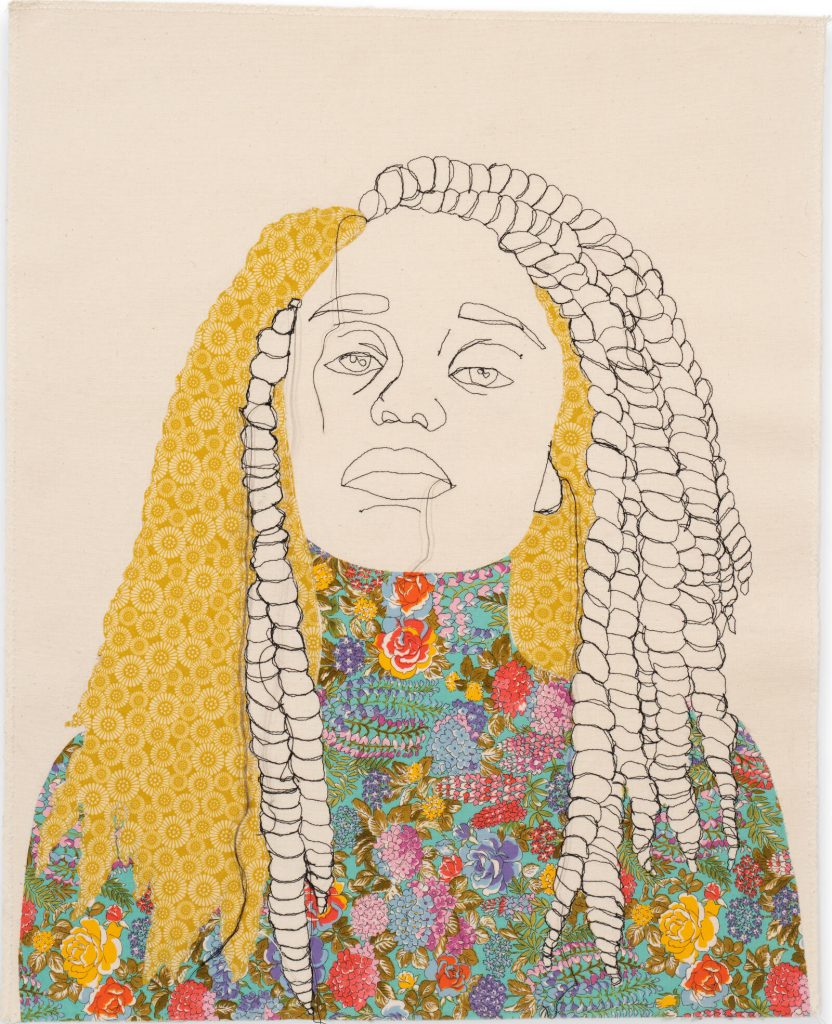
Gio Swaby, My Hands Are Clean 4, 2017, thread and fabric sewn on canvas, collection of Claire Oliver and Ian Rubinstein. Courtesy of Claire Oliver Gallery.
Gio Swaby investigates joy, softness, and strength throughout her works. However, her series Another Side to Me, specifically explores vulnerability. In a daring reversal of perspective, Swaby showcases the backside of sewn portraits with their under threads, jumps, and loose strands. The wandering lines forming the fabric folds are particularly impressive! Swaby presents the viewer with the reversed side of the portraits which symbolizes the hidden side of the subjects. Everyone has loose threads in their lives, but how often does anyone showcase them?
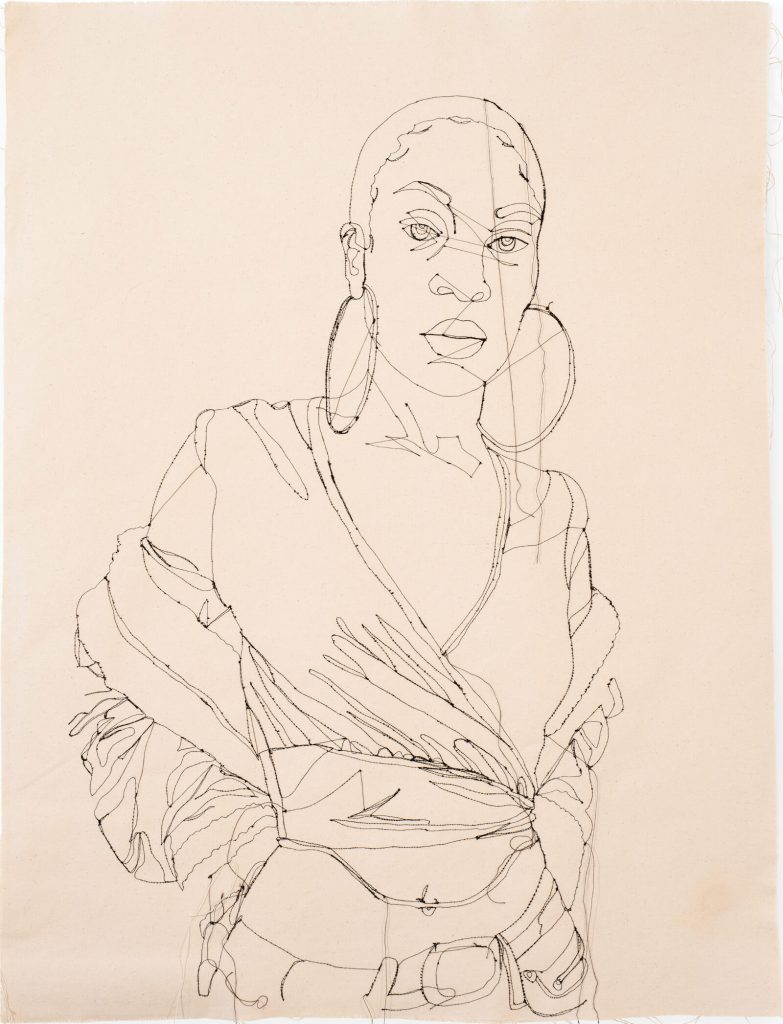
Gio Swaby, Another Side to Me 4, 2020, thread sewn on canvas, collection of Jason Reynolds. Courtesy of Claire Oliver Gallery.
Love is a universal emotion that transcends obstacles and boundaries. In her series Love Letter, Swaby dedicates several faceless silhouettes to the love of Black women. The artist experienced the loss of her mother and grandmother in a short timeframe, and these senses of love and loss can be felt in the series. She does not include faces to allow viewers to identify with the subjects. The Black community and its allies can project and see their own friends and family in Love Letter. Who do you see in Love Letter 1?
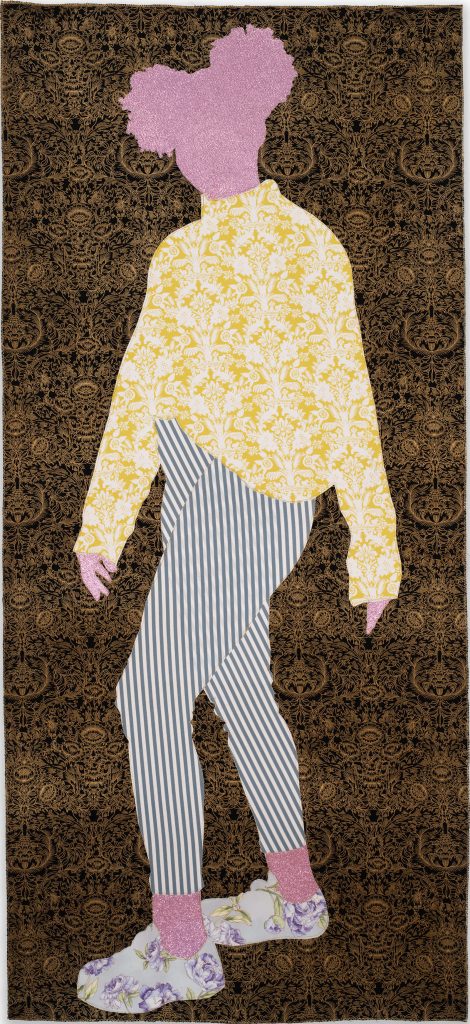
Gio Swaby, Love Letter 1, 2018, thread and fabric sewn on canvas, collection of Roxane Gay and Debbie Millman. Courtesy of Claire Oliver Gallery.
Many artists too often direct their subjects to pose a certain way, to wear a specific outfit, and to accept a distinct message. Gio Swaby does not command her friends and family to assume such directions. Swaby wants the subjects to direct their own images by asking them to select their own poses, outfits, and messages. Therefore, the subjects’ portraits are highly self-constructed images.
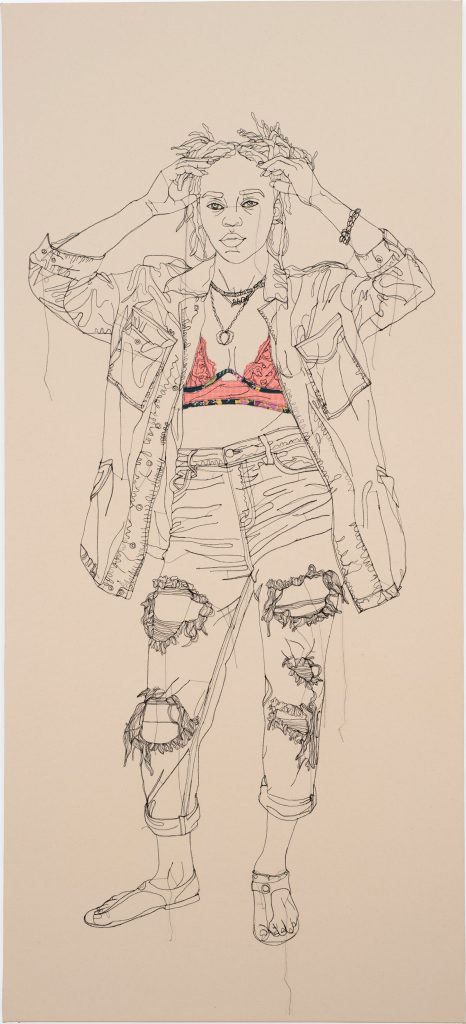
Gio Swaby, Pretty Pretty 8, 2021, thread and fabric sewn on canvas, Museum of Fine Arts, Saint Petersburg, FL, USA.
One of the most striking images is Pretty Pretty 9 with its low-placed composition. The subject is crouching and positively fills only the lower half of the canvas. The upper half is entirely empty negative space. It is a brave move in portraiture when the dominating highest standard is a standing full-length figure. The Grand Manner style of Sir Anthony van Dyck, Thomas Gainsborough, and John Singer Sargent are boldly rejected. Swaby’s images are not swagger portraits. They are deeply personal and self-erected presentations of the subjects.
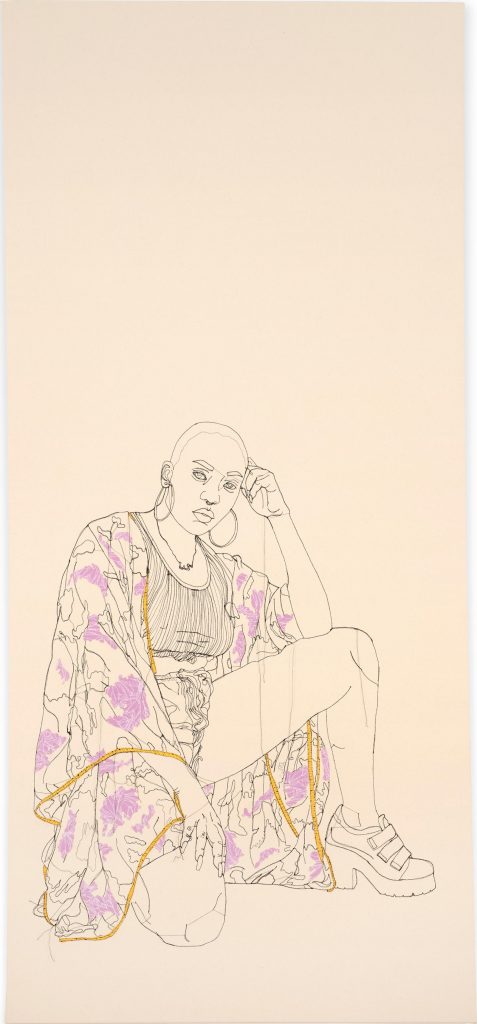
Gio Swaby, Pretty Pretty 9, 2021, thread and fabric sewn on canvas, Art Institute of Chicago, Chicago, IL, USA.
Gio Swaby: Fresh Up is an important exhibition that explores the intersection of blackness and womanhood. It explores themes commonly experienced by Black women and other people of color in the USA. Swaby’s exhibition also elevates textile work from craft to art by using familiar domestic materials to convey important public ideas. View this show and enter a safe space of awareness, dialogue, and creativity. Exit your comfort zone. Enter a better you.
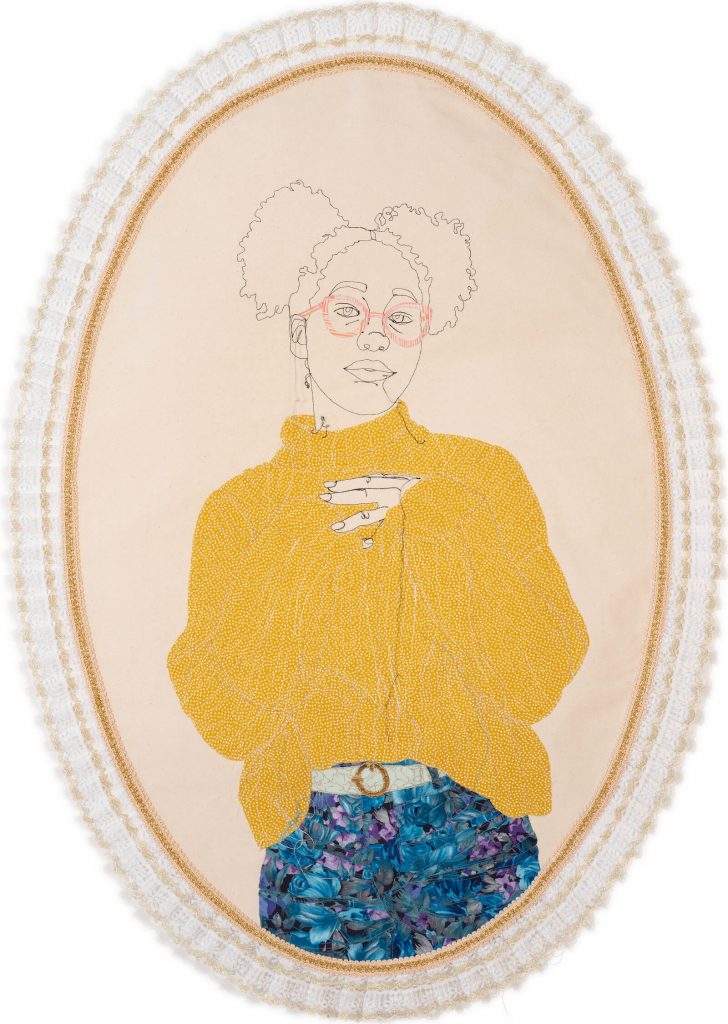
Gio Swaby, Going Out Clothes 3, 2020, thread and fabric sewn on canvas, collection of Claire Oliver & Ian Rubinstein. Courtesy of Claire Oliver Gallery.
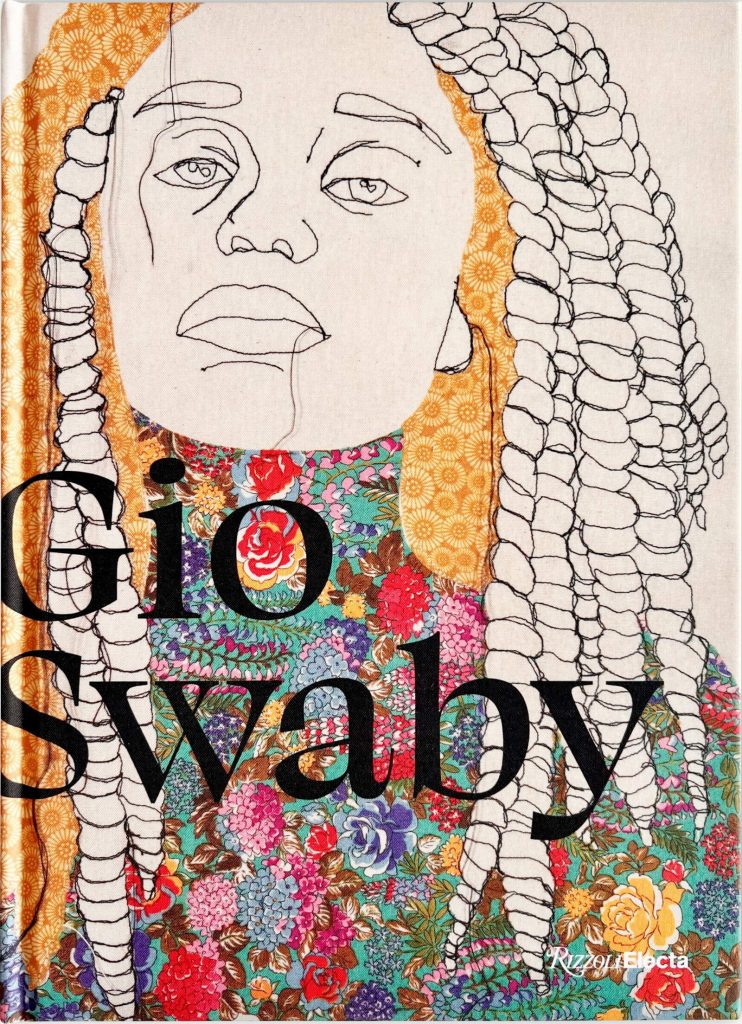
Catalog cover, Gio Swaby: Fresh Up by Nikole Hannah-Jones, Katherine Pill, Gio Swaby, and Melinda Watt, April 2022.
“Gio Swaby: Fresh Up: Press Release,” 19 April 2022. Museum of Fine Arts, Saint Petersburg, FL, USA.
Hannah-Jones, Nikole, Katherine Pill, Gio Swaby, and Melinda Watt. Gio Swaby: Fresh Up. Catalogue. New York City, NY: Rizzoli Electa, 12 April 2022.
Singer, James W., and Katherine Pill. Guided Tour of Gio Swaby: Fresh Up. Personal Interview, 3 August 2022.
DailyArt Magazine needs your support. Every contribution, however big or small, is very valuable for our future. Thanks to it, we will be able to sustain and grow the Magazine. Thank you for your help!